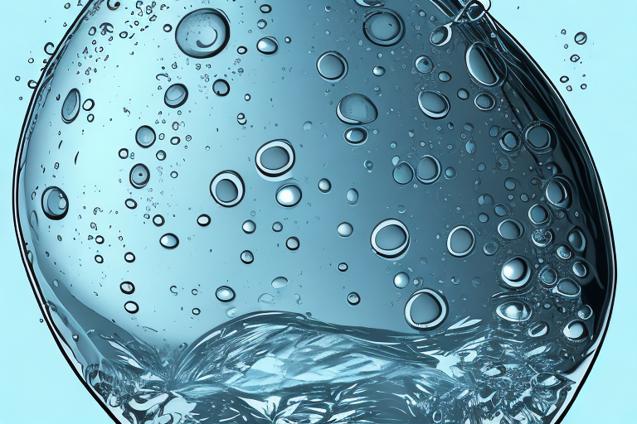
Discover ways to minimize your water usage while sailing and help preserve our planet's most precious resource for future generations.
How to Minimize Water Usage While Sailing
Sailing the open seas with your family is an incredible experience, but it also comes with a responsibility to protect the environment. One of the most important aspects of sustainable sailing is minimizing water usage. In this article, we will explore various ways to conserve water on your boat, ensuring that you can enjoy your adventures while also preserving our planet’s most precious resource.
Table of Contents
Understanding Your Water Footprint
Before we dive into specific water-saving tips, it’s essential to understand your water footprint. Your water footprint is the total volume of freshwater used to produce the goods and services you consume. This includes direct water usage, such as drinking, cooking, and washing, as well as indirect water usage, such as the water required to produce the food you eat and the products you buy.
By understanding your water footprint, you can identify areas where you can reduce your water consumption and make more sustainable choices. To calculate your water footprint, you can use online tools like the Water Footprint Calculator.
Water Conservation Tips
Now that you have a better understanding of your water footprint, let’s explore some practical ways to conserve water while sailing.
Freshwater Management
Proper freshwater management is crucial for minimizing water usage on your boat. Here are some tips to help you manage your freshwater supply effectively:
-
Monitor your water usage: Keep track of your water consumption by regularly checking your water tank levels. This will help you identify any leaks or excessive water usage and make adjustments as needed.
-
Plan your water usage: Before setting sail, create a water usage plan that outlines how much water you will need for drinking, cooking, and cleaning. This will help you avoid running out of water or using more than necessary.
-
Choose water-efficient destinations: When planning your sailing route, consider the availability of freshwater sources at your destinations. Opt for locations with water-efficient facilities, such as marinas with water-saving showers and laundry services.
Water-Saving Appliances and Fixtures
Investing in water-saving appliances and fixtures can significantly reduce your water consumption on board. Here are some options to consider:
-
Install a water-saving faucet: A water-saving faucet can reduce water flow by up to 50%, helping you conserve water while washing dishes or brushing your teeth.
-
Use a low-flow showerhead: A low-flow showerhead can reduce water usage by up to 70% compared to a standard showerhead. This can save a significant amount of water, especially if you have multiple people on board.
-
Choose a water-efficient toilet: A water-efficient marine toilet uses less water per flush, helping you conserve water with each use.
-
Invest in a water-saving washing machine: If you have a washing machine on board, opt for a water-efficient model that uses less water per load.
Efficient Water Use Habits
Adopting efficient water use habits is essential for minimizing water usage while sailing. Here are some tips to help you develop water-saving habits:
-
Take shorter showers: Reducing your shower time by just a few minutes can save a significant amount of water. Aim for showers that last no longer than five minutes.
-
Turn off the faucet when not in use: Make a habit of turning off the faucet while brushing your teeth, washing your face, or scrubbing dishes. This simple action can save gallons of water each day.
-
Wash dishes efficiently: Instead of letting the faucet run while washing dishes, fill a basin with soapy water and use a sponge or brush to scrub the dishes. Rinse them in a separate basin filled with clean water.
-
Use a broom instead of a hose: When cleaning your boat’s deck, use a broom to sweep away dirt and debris instead of hosing it down. This can save a significant amount of water.
-
Reuse towels and linens: Instead of washing towels and linens after each use, hang them up to dry and reuse them multiple times before washing. This can help reduce your laundry water usage.
Water Collection and Recycling
Collecting and recycling water is another effective way to minimize water usage while sailing. Here are some methods to consider:
-
Collect rainwater: Install a rainwater collection system on your boat to capture and store rainwater for later use. This can be as simple as placing buckets on deck or as advanced as installing a custom-built collection system.
-
Recycle greywater: Greywater is the wastewater generated from activities like washing dishes, showering, and doing laundry. By installing a greywater recycling system on your boat, you can treat and reuse this water for non-potable purposes, such as flushing toilets or watering plants.
-
Use a solar still: A solar still is a device that uses the sun’s energy to distill seawater into freshwater. While this method may not produce a large volume of water, it can be a useful backup source in emergencies or when freshwater supplies are low.
Conclusion
Minimizing water usage while sailing is not only essential for preserving our planet’s resources but also for ensuring a sustainable and enjoyable sailing experience. By implementing the tips and strategies outlined in this article, you can significantly reduce your water footprint and contribute to a more sustainable future for our oceans and the world.
Remember, every drop counts, and your efforts to conserve water will make a difference. So, set sail with a commitment to water conservation and enjoy the freedom and fulfillment that comes from embracing an environmentally responsible sailing lifestyle.